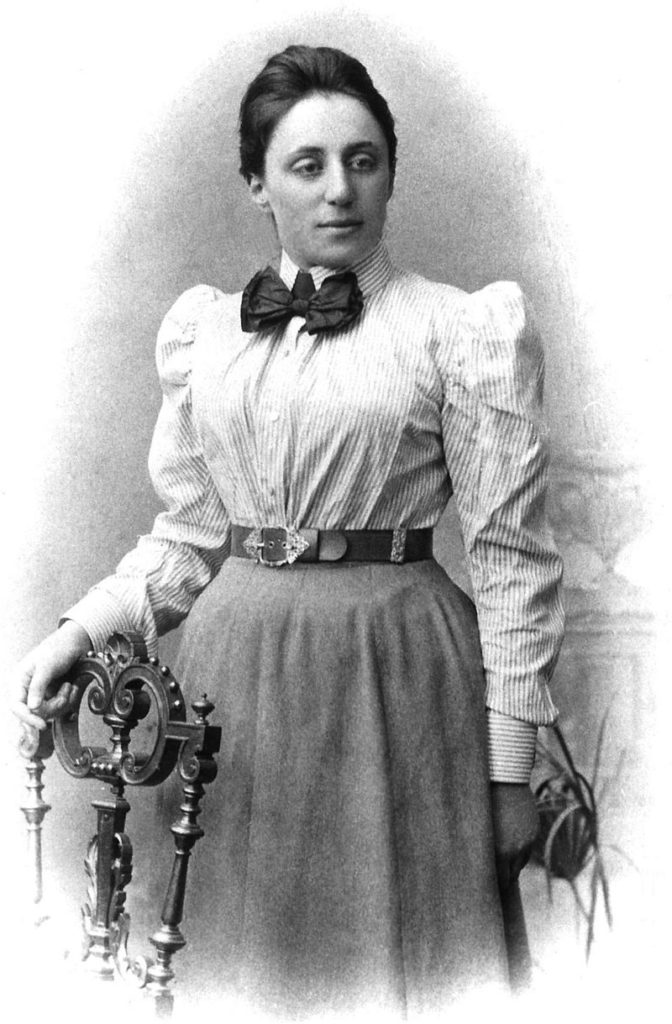The legacy of Emmy Noether
BLOG: Heidelberg Laureate Forum


Emmy Noether was a German mathematician who lived from 1882 to 1935, and made huge contributions to the worlds of mathematics and physics. She is a shining example of an excellent mathematical mind, but also a sad example of the struggles women faced in mathematics during her lifetime.
Emmy grew up in Erlangen, Bavaria, in a fairly academic household with two other mathematicians (her father Max, and brother Fritz). Her aptitude for the subject meant she wanted to study it at university – which nowadays would seem like a logical step, but in those days it wasn’t heard of. Instead of formally enrolling as a student at the University of Erlangen, Emmy was permitted to audit classes, meaning that with permission from the professors giving the lectures, she could sit in the room and watch – and she seized the opportunity to learn. Emmy was one of only two women in a university of 986 students.
Noether progressed with her studies despite these obstacles: she studied for a year at the University of Göttingen, then returned to Erlangen to teach – unpaid – and built up relationships with leading mathematicians including David Hilbert and Felix Klein. She was invited by Hilbert to teach at Göttingen in 1915, in spite of the university’s protests, but proved to be a worthwhile addition.
Throughout, Noether was consistently mathematically brilliant and her enthusiasm for mathematics was obvious. She was a helpful and patient teacher, worked well with others, and was not egotistical – despite all the disadvantages she faced, she was more concerned about injustices towards her students.
During her mathematical career, Noether worked in three main areas, as outlined by Hermann Weyl: on the calculus of invariants, leading to Noether’s Theorem – a hugely important idea in mathematical physics, linking symmetry to conservation laws; in abstract algebra, developing the theory of ideals in commutative rings; and in representation theory, bringing modules and ideals to the theory of group representations. She was also credited with assisting people and working in many other areas, without credit – including having a hand in the origins of the field of algebraic topology.
When Hitler came to power in Germany in 1933, Emmy was forced to leave her university job due to her Jewish background. She found a post at Bryn Mawr University in the US, lecturing there and at Princeton until she died a few years later, after suffering from an ovarian cyst.
Noether has been described by many as the most important woman in the history of mathematics – but it might be fairer to say that she’s one of the most important mathematicians of the last century, and the fact that she was a woman and had to deal with the prejudices she did just makes this more impressive. Unlike many of her male counterparts, Noether’s name isn’t as well-known as it should rightly be, and some have taken steps to try to rectify this.
Last November, I joined forces with Constanza Rojas-Molina, who’s been part of the HLF blog team and written blogs posts and done sketches of talks at the HLF for the last few years. Coni suggested we should do something in the month of November, and rename it Noethember. Inspired by the #inktober hashtag, used by illustrators and artists to motivate themselves to post an ink drawing every day in October, we decided #noethember would be a chance to celebrate Emmy Noether every day in November – with a drawing, a sketch, a story or anything else that remembers her life and work.
We picked a list of Noether facts, one for each day of the month and challenged the internet to respond – which they did. The hashtag was busy every day with sketches, photos, links, posts and all kinds of tributes, and we all learned a huge amount about Noether and her wonderful mathematical mind. We’ve written a round-up post collecting some content and other write-ups of the month, and you can still search for #noethember on Twitter to see what happened each day.
Some people drew an image every day, and others meant well to start with but tailed off (myself included!) while many just posted a few times during the month. The keenest posters got the most out of it, and some have even started an initiative to have a suggested theme for a creative mathematical drawing or craft every week in 2019 – look for the hashtag #mathyear to see how they’re getting on, or to join in visit Marlene Knoche’s blog where they’re sharing the topics each month.


Wandering through Erlangen recently I came across Emmy’s “Geburtshaus”. Surprisingly, the plaque was erected as recently as 1997. I will email you my photo Katie – I can’t find how to put it up here but this link might work: